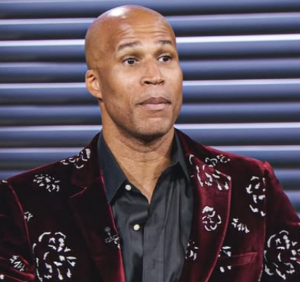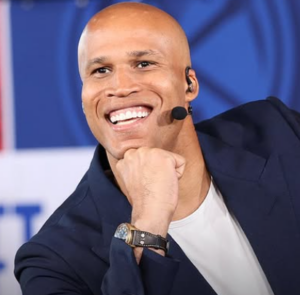Richard Jefferson’s $3.5 million donation to Arizona was more than just a financial contribution—it was a statement about the importance of investing in the future
By choosing to fund a facility rather than NIL deals, he prioritized long-term program success over short-term financial gains for athletes.
His generosity has left an indelible mark on Arizona’s basketball program, ensuring that future generations of Wildcats have the resources they need to succeed.
His story serves as a powerful example of how athletes can give back to the institutions that helped shape their careers.
While Jefferson remains a dedicated supporter of his alma mater, his hesitance to invest in NIL reflects broader concerns about the system’s sustainability.
As college sports continue to navigate this evolving landscape, voices like Jefferson’s will play a crucial role in shaping reforms that ensure both player empowerment and institutional integrity.
His perspective highlights the need for a balanced approach—one that allows athletes to benefit financially while maintaining the traditions and values that make college basketball special.

Also Read: Is Richard Jefferson Married? Who’s Wife? Ex-Girlfriend
Table of Contents
Richard Jefferson’s Stance on NIL
A Generous Donor with Firm Beliefs
Richard Jefferson, a former NBA champion and TV analyst, has always maintained a strong connection to his alma mater, the University of Arizona.1
Over the years, he has donated millions to the basketball program, reinforcing his commitment to the school that helped shape his career.
However, when it comes to supporting the NIL (Name, Image, and Likeness) market, Jefferson has taken a firm stance against direct contributions, citing concerns over its lack of regulation and player mobility.
The construction of the new gymnasium brought immediate and long-term benefits to the Arizona Wildcats.
A modern facility helped with recruiting efforts, as prospective players were drawn to a program with top-tier resources.
It also provided current student-athletes with an upgraded environment to hone their skills, improving the team’s overall performance. The investment in infrastructure reinforced Arizona’s status as a premier college basketball destination.
I just see people existing. Relax https://t.co/c6S5hOr8yv pic.twitter.com/M3GVZraRsK
— Richard Jefferson (@Rjeff24) February 25, 2025
The Evolution of NIL in College Basketball
The NIL era has transformed college sports, giving athletes opportunities to profit from their personal brand.
This shift has empowered student-athletes, allowing them to sign endorsement deals, partner with businesses, and earn significant income.
However, with this new financial freedom comes challenges, including inconsistent policies, recruiting imbalances, and increased player transfers, which Jefferson sees as major concerns.
Jefferson’s donation has set a precedent for future alumni to follow. His willingness to give back demonstrates the profound impact that former players can have on their programs.
As more athletes achieve financial success, they may be inspired to make similar contributions, ensuring that their colleges continue to thrive in an increasingly competitive sports environment.

Richard Jefferson’s History of Giving Back
Despite his reservations about NIL, Jefferson has a well-documented history of financially supporting Arizona’s basketball program.2
Reports indicate that he has donated as much as $3.5 million to the school, reinforcing his belief in funding player development, facilities, and scholarships.
Unlike NIL contributions, these donations provide long-term benefits to the program without directly impacting player recruitment and retention.
One of Jefferson’s biggest critiques of the NIL system is the absence of standardized regulations.
Without a governing body ensuring fair and consistent guidelines, he believes that the NIL market operates more like a bidding war than a structured support system for athletes. In his words:
“Why would you invest your money in something that isn’t regulated?”
This lack of oversight has led to discrepancies in player compensation, influencing recruitment decisions and making it difficult for schools to maintain roster stability.
The Transfer Portal and Its Impact on Loyalty
Another major issue Jefferson raised is the increased frequency of player transfers due to lucrative NIL deals.
In today’s NCAA landscape, athletes can switch schools with minimal restrictions, often chasing better financial opportunities. Jefferson highlighted this concern by stating:
“You put money into a pool and you can give a kid a million dollars, and the next year someone can offer him $1.1 million at another school, and he can just go.”
This phenomenon has made it difficult for programs to build team chemistry and continuity, undermining the traditional college basketball model that values player development over short-term financial gains.

Richard Jefferson: Debate Among Former Athletes
Jefferson is not alone in his skepticism. While some former players are enthusiastic about funding their alma mater’s NIL programs, others share his concerns.3
The primary divide centers around the ethical and strategic implications of paying players directly versus supporting institutional growth.
Some argue that NIL allows players to be compensated fairly, while others believe it creates instability within college athletics.
Recognizing Jefferson’s immense generosity, the University of Arizona decided to name the facility after him. The Richard Jefferson Gymnasium stands as a testament to his contributions to the program and serves as an inspiration for future generations of athletes.
Having a training center named after an alumnus underscores the impact that former players can have on their college programs.

The Potential Future of NIL Regulation
As the NIL landscape continues to evolve, discussions around implementing stricter regulations have gained traction.
Many analysts and former athletes, including Jefferson, advocate for a structured framework to prevent financial exploitation and ensure fair competition.
Potential solutions include salary caps, standardized contracts, and transfer restrictions to balance player compensation with program stability.
Since retiring from the NBA, Jefferson has transitioned into a prominent media personality, using his platform to discuss critical issues within basketball.
His take on NIL adds a valuable perspective to the ongoing debate, influencing how fans, players, and decision-makers view the current system.
His experience as both a player and a donor gives him a unique lens through which to critique the NIL market.

Also Read: Sha’Carri Richardson Matches Lifetime Best in 200m Semifinals at U.S. Olympic Trials
Richard Jefferson’s $3.5 Million Donation
A Game-Changer for Arizona Athletics
Richard Jefferson is widely recognized for his contributions to basketball, both in college and in the NBA. However, his impact extends far beyond his playing career.
His $3.5 million donation to the University of Arizona in 2007 was a defining moment that demonstrated his commitment to the institution that shaped his early years.
His decision to give back exemplifies the potential of alumni contributions to transform athletic programs.
When Jefferson made his generous donation, he was at a significant point in his career. He was a key player for the then-New Jersey Nets and had secured a lucrative $78 million contract extension.
By 2007, Jefferson had already established himself as one of the NBA’s most reliable forwards. Instead of focusing solely on his professional success, he chose to make a lasting impact at his alma mater.
Why Jefferson Chose a Facility Over NIL Donations
In recent years, the discussion around Name, Image, and Likeness (NIL) deals has dominated college sports.
Many high-profile donors direct their contributions toward NIL collectives that benefit current student-athletes financially. However, Jefferson has expressed a different perspective.
He believes that long-term infrastructure, such as practice facilities, can provide more sustainable benefits to a program.
His stance is evident in his decision to fund the construction of a new gymnasium rather than direct financial support to individual players.
At the time of Jefferson’s donation, it was believed to be the most significant individual contribution from an alumnus to Arizona’s athletics department.
This milestone underscored not only Jefferson’s generosity but also the evolving role of former athletes in supporting their college programs.
The funds were instrumental in the development of a state-of-the-art gymnasium, which benefited both the men’s and women’s basketball teams, as well as the volleyball team.

Richard Jefferson’s Continued Connection to Arizona
Despite his busy schedule as an NBA player and later as a broadcaster, Jefferson has maintained a strong connection with Arizona.
He frequently engages with the basketball program, offering mentorship to players and showing support at games.
His ongoing involvement exemplifies the deep bond between alumni and their alma mater, reinforcing the idea that giving back goes beyond financial contributions.
Throughout his 17-year NBA career, Jefferson earned over $116 million in salary alone. At his peak, he made $14.2 million per season while playing for the San Antonio Spurs.
While many professional athletes use their wealth for various personal endeavors, Jefferson’s decision to allocate a significant portion of his earnings to his former school highlights his philanthropic mindset. His generosity serves as an example of how athletes can leverage their financial success to create lasting change.
View this post on Instagram
Alumni Giving in College Athletics
- Jefferson’s donation is part of a broader trend of former athletes giving back to their colleges.
- High-profile athletes often contribute to their alma maters, helping fund scholarships, facilities, and other essential resources.
- These contributions play a critical role in sustaining and improving collegiate sports programs.
- While NIL deals have changed the landscape of college athletics, infrastructure investments remain crucial for long-term success.
- Many former athletes have given back to their colleges, but Jefferson’s donation stands out due to its size and immediate impact.
- For example, NBA star Kevin Durant donated $3 million to the University of Texas, while Michael Jordan has made significant contributions to the University of North Carolina.
- These donations help universities remain competitive and provide student-athletes with world-class resources.
- One of the most critical aspects of Jefferson’s viewpoint is his emphasis on sustainable investments.
- While NIL deals provide immediate financial benefits to student-athletes, they do not necessarily contribute to a program’s long-term development.
- A practice facility, on the other hand, serves multiple generations of athletes, enhancing training conditions and recruitment efforts for years to come.
- Jefferson’s perspective highlights the importance of balancing short-term and long-term priorities in college athletics.




